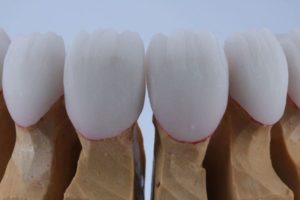Occlusion or Delusion: What is Never True for Patients Who Experience Pain?
In the detective process of determining the best treatment for a patient who has or is currently experiencing pain, it’s best to eliminate impossibilities from the investigation.
Are the Patient’s Joints Healthy or Breaking Down?
You’ve sat down with your patient and determined that occlusion might be in their future. You’ve even explained to them what reasonable expectations are and figured out how to get the ball rolling toward treatment.
Now it’s time to start determining the real reasons why their particular anatomy and circumstances have brought them to your practice. This is the point where joints, muscles, and tops of teeth become crucial areas of investigation.
Detective Work and Pain Mysteries
 You have to play detective with the patient.
You have to play detective with the patient.
What they say and infer from their symptoms should filter through your past experience and knowledge base. You have to translate their observations into the actual possibilities you know exist.
This is where yes and no questions in a joint and muscle exam become so useful. They help us discover what is definitely not true for the patient’s symptoms.
What is Never True for Patients With Pain
If the weird feeling or pain a patient experienced went away, patients believe they’re better. But this is never true even if the noise goes away.
Anatomically the relationship between the disc and the head of the condyle has actually gotten worse, even though to the patient the situation has improved.
 You need to ask the patient: Have they ever made noise? If the answer is yes, then you need to get a timeline of when the noise went away.
You need to ask the patient: Have they ever made noise? If the answer is yes, then you need to get a timeline of when the noise went away.
The more time since the noise went away the better (counterintuitively) and if it disappeared very recently you can privately assume it’s worse.
The investigation continues at this point with another question: Did how the patient’s teeth fit together change?
If yes, this patient is a high risk patient. You know you’ve got work to do on the path of diagnosis, treatment, and occlusion.
How do you explain what’s actually going on to patients with joint or muscle pain? We’d love to hear from you in the comments!




